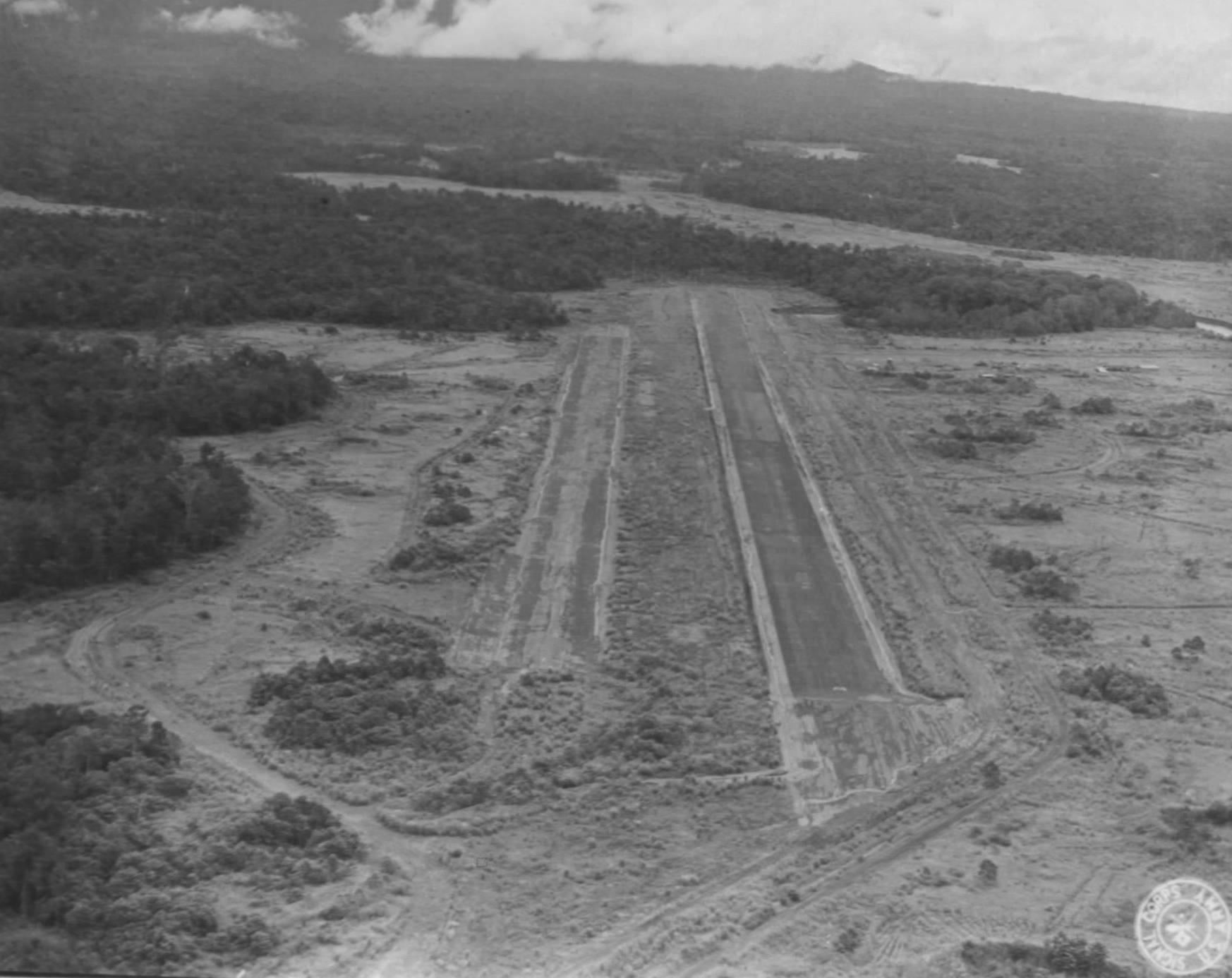An interactive map of the wartime airstrips in the Dobodura area. Zoom in to the Popondetta area to view the strip locations.
While based out of Port Moresby on the south coast of New Guinea, the 345th would sometimes fly to Dobodura the day before a big mission and then fly the mission from there. Staging out of Dobodura would save fuel and thereby increase the distance they could fly to a target and it would also eliminate the necessity of crossing the Owen Stanley mountain range. Crossing the Owen Stanleys was often hazardous due to severe storms, icing, and dense clouds. Trying to cross those mountains after being shot up during a mission or during rough weather resulted in the loss of quite a few airplanes. The missions to Rabaul in October and November of 1943 were staged out of Dobodura.
Dobodura itself was a small village about nine miles east of the larger town of Popondetta. Nearby villages, such as Horanda, Boro, Inonda, and Embi would also lend their names to airstrips that were constructed near them.
Some accounts say that as many as sixteen airstrips were built for wartime use in the Dobodura area. The resulting complex of airstrips, dispersal areas and taxiways was known as Dobodura, or the Dobodura Airfield Complex. I can only account for nine of these airstrips from the wartime maps at my disposal. There is quite a lot of open, level ground in the Dobodura area that could have accomodated the rest of them. I have included the wartime Popondetta strip on the map even though it was not part of the Dobodura airfields.


The Air Apaches began moving from their bases in Port Moresby to Dobodura at the end of 1943 and were operating off the Horanda strips by January 1944. In the Local Interest Narrative section of the January 1944 501st Unit History, it is mentioned that the 501st was camped on the banks of a “fair-sized” river about two miles north of the Number Four strip. That camp had been occupied by the 22nd Bomb Group previously, so the 501st enjoyed the mess hall and tent frames they left behind. The flight line and hard stands were within walking distance of the camp and it was a long taxi to the Horanda strip.
